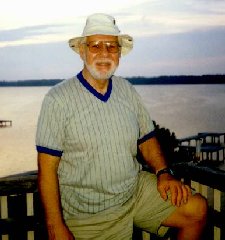1/30/08
California streaming
TRI-O’s:Oddities, observations & opinions
By Herb Kandel
We have all heard the theory of the “six degrees of separation,” which asserts that anyone can be connected to any other person through a chain of acquaintances that has at most six others. Stretching this premise to include the past and six plus degrees of similarities: How do the events of 160 years ago relate to Arnold Schwartzenegger, governor of California, today? Let’s connect some dots.
It started when Johann was born in Germany of Swiss parents. He later changed his name to John and gave himself the title of captain (falsely claiming to have been an officer in the Swiss Guard). He became an adventurer, a planter and a big land owner. He was Swiss, American, Mexican and then again American by repeated naturalizations. He fled Switzerland, and his creditors, leaving behind a wife and children, promising to bring them over as soon as he was able. It was 16 years later that this pledge was kept.
America was his hope for opportunity and wealth. From New York he went to Kansas City, Mo., where he started a trading company between there and Santa Fe, N.M. His wanderlust eventually took him to Vancouver, Hawaii, Sitka, Alaska, Yerba Buena (now San Francisco) and Monterey, the capital of Mexican California. Always the opportunist he became a Mexican citizen, a Roman Catholic, an overseer of the Indian residents and a civil official of the Mexican government. He did all this in order to obtain a land grant of almost 50,000 acres. Another requirement was to establish a permanent settlement. So up the Sacramento River he and his entourage sailed to create the first non-native/Mexican presence in the Sacramento Valley. He named the area New Helvetia (New Switzerland).
In addition to the mud brick huts, he built a sturdy fort as a protection from the Mexican government because they had arrested some new immigrants on slim charges and to give the perception of castle-like security to prospective new settlers, for he knew the value of his land would increase in direct proportion to their numbers — not to mention that they would have to buy all their supplies from his trading post. Using New Helvetia as collateral, he bought more trading outposts. In July 1846, the Mexican flag was replaced by the Stars and Stripes over California. John by this time had a distillery, a tannery and a flour mill. The westward march was started, now a sawmill was necessary to provide the lumber for all the new homes. He gave it his name. It is still called Sutter’s Mill.
It was here on Jan. 24, 1848 that yellow nuggets were discovered near the mill site and the Gold Rush was on!
The land was soon teeming with squatters and rouges who overran the land. They killed his cattle and laid waste the progress in their mad pursuit of gold; 40,000 prospectors trampled the grounds he could not defend. John Sutter sued the government for $50,000 for his losses. He was to die before any settlement was made. In his diary he states, “By this sudden discovery of the gold, all my great plans were destroyed. Had I succeeded for a few years before the gold was discovered, I would have been the richest citizen on the Pacific shore.”
So, where does all this fit in with Gov. Arnold in six plus degrees of similarity?
Both were born near the same geographic locality.
They were from middle class families and sought new opportunities in America.
Each had four children.
Personality-wise both they share the common traits of amiability, making friends, ambition, optimism, business savvy and being politically connected.
They both relied on Hispanic residents for support and industry.
Both were candidates for governor (only Arnold succeeded).
Schwartzenegger holds dual citizenship in the U.S. and Austria. Sutter had several.
Financial independence for both came as a result of successful investments, business projects and real estate.
They had titles. Arnold won Mr. Universe and Mr. Olympia. Sutter anointed himself captain and was appointed major general by the California Convention.
And lastly, both took chances. Arnold was involved in two motorcycle accidents along with being in countless close calls in the movies. Sutter put himself in many threatening situations. One can just see him emerging from a dangerous circumstance and voicing in in that menacing guttural tone, ala Arnold, “Ah’ll be bahk.”
http://www.baldwincountynow.com/articles/2008/01/30/columnists/doc479f9899a454a448276989.txt
Wednesday, February 06, 2008
Subscribe to:
Posts (Atom)
